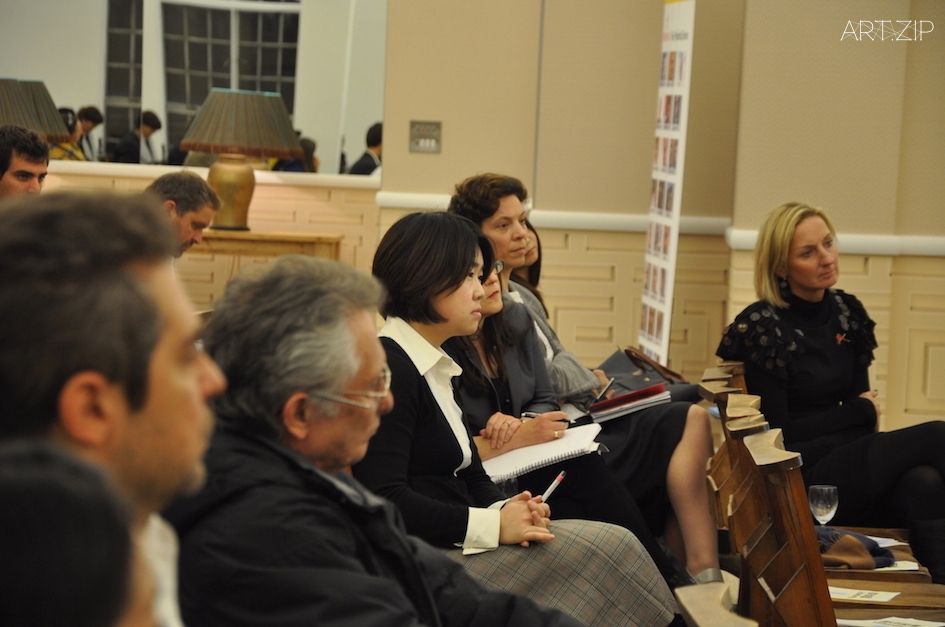
New Methods, New Power:Shifting Trends in Museum Leadership and Partnerships
The event was hosted at the China Exchange, an inspiring new venue in Chinatown dedicated to supporting innovative initiatives in business – and was introduced by Xiang XiaoWei, the Cultural Counsel of the Chinese Embassy and Sarah Percy-Davis, the Chairman of Asian Art in London.
The speakers were Mr Zikang Zhang, the Deputy Director of the National Art Museum of China (NAMOC) and Dr Alex Gao, the Director of the Today Art Museum, who travelled from China specially for the event.
Here are three key takeaways Bernadine Bröcker from Vastari had after the event on 14 October 2015:
Communication is key
From the past experience of both Dr Gao and Mr Zhang, as well as the introduction by Mr Xiang from the Chinese Embassy, it is clear that there is huge interest for China to work with Britain but a lack of clear communication can really make a project fall apart.
The Chinese admire British institutions for their academic and curatorial skills but feel that it is often unclear what the mission of a collaboration is, thus making it hard to have all noses pointing in the same direction.
Moreover, this extends to simple things in daily interaction – a Chinese “yes” or even signed agreement might change (Mr Zhang ask us to remain positive, as most last-minute changes are usually for the better). As long as you keep communicating and stating clearly what your intention is, everything will move in the right direction.
Communication is also important when it comes to funding. I have personally seen projects fall apart due to lack of clear conversations about “who pays what”. Especially in exchanges that are mutually beneficial, which are particularly popular with government museums, it is important to acknowledge the costs and define exactly what will happen with them. There was a question from the audience about that as well, referencing how expensive the time-consuming process is for western museums to work with China. This is a given, but good communication will help navigate through any changes, setbacks or unexpected costs.
Private museums have more flexibility than public ones
This seems like a given, but I think the extent of limitations and bureaucratic processes that exist for public/government/national institutions is underestimated by many collaborators in the West. Budgets in Chinese government institutions are assigned on an annual basis, and they do not roll over to the next year.
Moreover, arranging visas, as well as exporting and importing objects, can be tricky. Mr Zhang’s visa and documentation to make an official visit to the UK, for our event and the ICOM Working Internationally Regional Project (WIRP) was only confirmed one week before the event was to take place.
The additional leniency within an institution that is funded by individuals rather than a large government body, and the funding can be used in more creative ways.
Not all Chinese audiences are created equal
Dr Gao reminded us that there is a huge difference between people in the capital, the South, the East or the West. Don’t take for granted the different backgrounds of each region. With the free admission to government museums, attendance figures to exhibitions is through the roof, which inspires many museums to want to work with China, even in 2nd and 3rd tier cities.
These cities have a hunger work Western art and especially collaborations with Germany and France have been very fruitful in the past, but topics that are known to Chinese are most successful, like the Impressionists but also German Enlightenment or Napoleon.
Popular exhibitions will definitely do well, and you can expect good attendance to these blockbusters. Mr Zhang had a great example. One recent exhibition “Shiqu Baoji” at the Palace Museum in the Forbidden City had 6-hour queues meaning some people couldn’t enter the exhibition till 9 or 10 pm.
Chinese museums are also looking for ways to engage with millennials – and getting it right
Looking at Mr Gao’s proposals for the virtual museum of the Today Art Museum is extremely exciting. Not only have they hired space on Times Square in New York to give their museum further reach, there are infinite possibilities for interaction using their mobile apps and website. This acknowledgement of the importance of engagement with a younger, tech-savvy generation is admirable.
And my last piece of advice comes from personal experience: if you are moving forward, don’t give up. There were many setbacks in organising our event but it was completely worthwhile once everyone was at the venue and ideas were exchanged. There is a real interest in collaboration and it is possible… Just keep holding on no matter what changes!
Edited by Qiwen Ke





